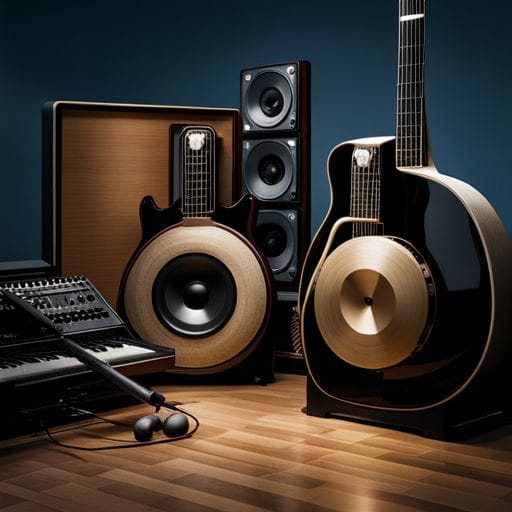Sound Design for Film Scores: Matching Music to Visuals

How does the process of matching music to visuals differ in sound design for film scores compared to other types of production?
The relationship between picture and sound is a crucial aspect of filmmaking, and nowhere is it more vital than in the composition and design of a film’s score. A convergence of art forms, the film score is a delicate ballet of auditory spectacle, made to complement and enhance what we see on screen.
The Art of Scoring
Scoring music for a film is not just about constructing beautiful harmonic structures that can stand-alone. Rather, it is about creating a sonic backdrop that draws attention to the film’s visual storytelling, heightening the emotional impact of each scene. Much like lighting, set design, or cinematography, a film score becomes an integral part of the final film, melding with the visuals.
The Role of the Music Composer
The process begins with the film’s composer and director working to discern what kind of mood they want to evoke for each scene. A good composer will learn how to use different elements of music, such as rhythm, melody, texture, and harmony to enhance mood and emphasize visual elements.
Tempo and Rhythm
For example, fast tempos and complex rhythms can induce feelings of tension or excitement, while slow tempos and simple rhythms can evoke feelings of tranquility or sadness. By tweaking these elements of the composition, the composer can guide the viewer’s emotional response to the scene.
Pitch and Harmony
Similarly, pitch and harmony are also important elements of sound design. High pitches can evoke feelings of anxiety or fear, while low pitches can suggest calmness or melancholy. The choice of harmony can also play a significant role in setting the mood. Major chords can portray happiness or elation, whereas minor chords can denote sorrow or despair.
Sound Design in Action
Once the music has been composed, the next step is to design how it will be integrated with the visual elements already in place. This art of merging music with visuals is known as sound design. In this phase, the music composer and sound designer work in unison, shaping the way in which sound interacts with the visual storytelling.
The Ultimate Audio-Visual Experience
Properly done, a well-composed and well-integrated film score creates a harmonious and complete experience for the viewer. It serves to enhance the narrative, build tension, convey emotions, and in many cases, develop characters. The visuals and music should not be treated as separate entities but as one cohesive package delivering the ultimate audio-visual experience. Ultimately, the successful matching of music to visuals in a film score is achieving a perfect synchrony between hearing and sight.
Conclusion
In conclusion, the role of sound design in film scoring goes far beyond setting a movie’s mood. It is a precise and delicate art of incorporating music that complements the visual storytelling to enhance the overall narrative of the film. By manipulating elements of music and skillfully integrating it with visuals, composers and sound designers can create a truly immersive cinematic experience.
